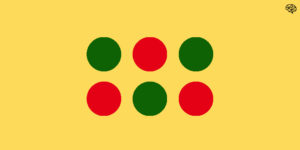One of my all-time favorite marketers is André Chaperon.
When I first got into the marketing game over a decade ago, I shelled out some good coin 💰 to get my hands on Andre’s copywriting & marketing courses. He had this way with words that really drew me in (you’ll understand why in a minute).
Andre is one of the most prolific email marketers. One of the most important lessons I picked up from him was how to use simple storytelling techniques – like strategically opening and closing loops – to build relationships with your email subscribers. He is a master storyteller with an uncanny ability to keep readers engaged and wanting more.
Whether you know what open loops are or not, you’ve likely experienced them. If you’ve ever watched a soap opera or Netflix series, you’ve been exposed open loops. If you’ve ever clicked on a clickbait subject line or header, you’ve been exposed to open loops.
Screenwriters and writers in general use open loops to keep viewers and readers engaged and wanting more. Open loops are the cliffhangers and unresolved storylines that make you come back to find out what happens.
When you open a loop, you create tension in the mind that doesn’t resolve itself until the loop is closed.
Our brains are wired to want to see things through completion. When we don’t, it’s uncomfortable. So you stick around or come back because you need to know what happens after the commercials or in the next chapter or in the next email. You need to close the loop.
Open loops are also closely tied to the Zeigarnik Effect which states that we have a ‘tendency to remember interrupted or incomplete tasks or events more easily than tasks that have been completed’. Remember this, because it’s important. When a loop is closed, your memory of it quickly fades. But while a loop is open, your recollection of the incomplete task sticks around longer.
So what do open loops have to do with productivity?
While open loops are great for storytelling, they can do harm to your focus and productivity. As they build up, they slow down your operating system and make it difficult to focus and get important work done. If you want to be a high performer, you have to know how to deal with open loops.
Question: How many times have you started a task or project and left it unfinished?
The answer, if you’re human, is probably many times. We’ve all started a new task or project with the utmost enthusiasm and then given up a quarter or halfway into the project. We’ve all got a stack of unfinished work logged somewhere.
Sometimes it’s fine to give up early if it makes sense to do so. There’s no need to throw good time after bad. If you’ve started a task or project and realized it’s not taking you closer to your objective, cut your losses. But many tasks and projects we give up on with the intention of bringing them back. Others are put on pause because we’re waiting for input from others.
These are the ones you need to watch out for. These are open loops that can create tension and discomfort, even if you’re not consciously aware of it. These are the ones that linger in the back of your mind and pop up periodically while you’re in the middle of a focus session. Recall the Zeigarnik Effect – your mind is storing the memory of all your unresolved work and it’s clouding your focus.
Unresolved tasks are not the only source of open loops. I also see micro open loops accumulate through meetings and instant messages. Have you ever left a meeting with seven undocumented things you need to look into? Have you ever received a long Slack message you can’t respond to in the moment but you know you need to eventually?
Then you’ve got the micro open loops that arise when you try to avoid an uncomfortable situation. Have you ever been asked to do something or be part of something you really don’t want to spend time on? But you ended up saying ‘maybe’ or ‘let me follow up’ because you wanted to avoid an awkward or uncomfortable situation?
These are all open loops that build up and take away valuable processing power.
How to deal with open loops
The best thing you can do to free your mind is to close as many open loops as possible. It’s like resetting your browser or restarting your computer. You need to clear out all the residual open loops and free up your processing power for important work.
The first step is to make a list of all your unfinished tasks and projects.
If you’re using my What-When productivity system, then there are two key areas to look at: your backlog and your ‘waiting’ column in your Kanban workflow. If you’re following my email processing system, take a look at your ‘waiting’ bucket. These are the places where many of your open loops will live. If you still mostly operate from your inbox and Slack messages (how dare you), you’ll need to dig around.
Once you’ve made your list of open loops, it’s time to make some decisions. For each open loop, you will need to either close the loop or schedule it.
Closing a loop is pretty straightforward – if completing an unfinished task or project is not going to bring you closer to your desired objective, immediately remove it from your queue and let any parties who are involved know that you’re closing out the project. You want to close the loop indefinitely.
For the unfinished tasks and projects that remain – these are the ones you deem still important to see through to completion – you have to schedule its completion and communicate with those involved what’s needed for completion (especially if you’re waiting on others).
These two steps will help you close most of your open loops.
When it comes to the micro open loops that arise from meetings and instant messaging, the best way to deal with them is to cut them at the source. At meetings, I make sure to log all my notes and action items and organize them in the right place. I put a lot of trust in my system and know that if I have them logged correctly, I can remove the open loop from my mind.
With instant messages, I use a simple technique to cut back on open loops: anytime I receive a long message I can’t respond to in the moment, I simply ask the sender to re-send me the message via email so I can be sure it doesn’t get missed. The email gets logged appropriately and I no longer have to think about getting back to the message – the system will take care of it.
When you’re asked if you want to join in on something you know you don’t want to be a part of, don’t say you’ll ‘follow up’ or ‘let them know later’. Don’t create that loop for yourself. If the answer is yes, say ‘yes, please email me the details’. If the answer is no, say ‘I’m sorry I’ve got another commitment but if anything changes I’ll let you know.’ Don’t delay the decision or put the onus on yourself to have to follow up. Make the call in the moment.
Open loops are great for storytelling, but you have to be mindful of what impact they can have on your focus and productivity. High performers always look to cut them at the source or close them as soon as possible.
I hope this helps you resolve the open loops in your life.
✌


